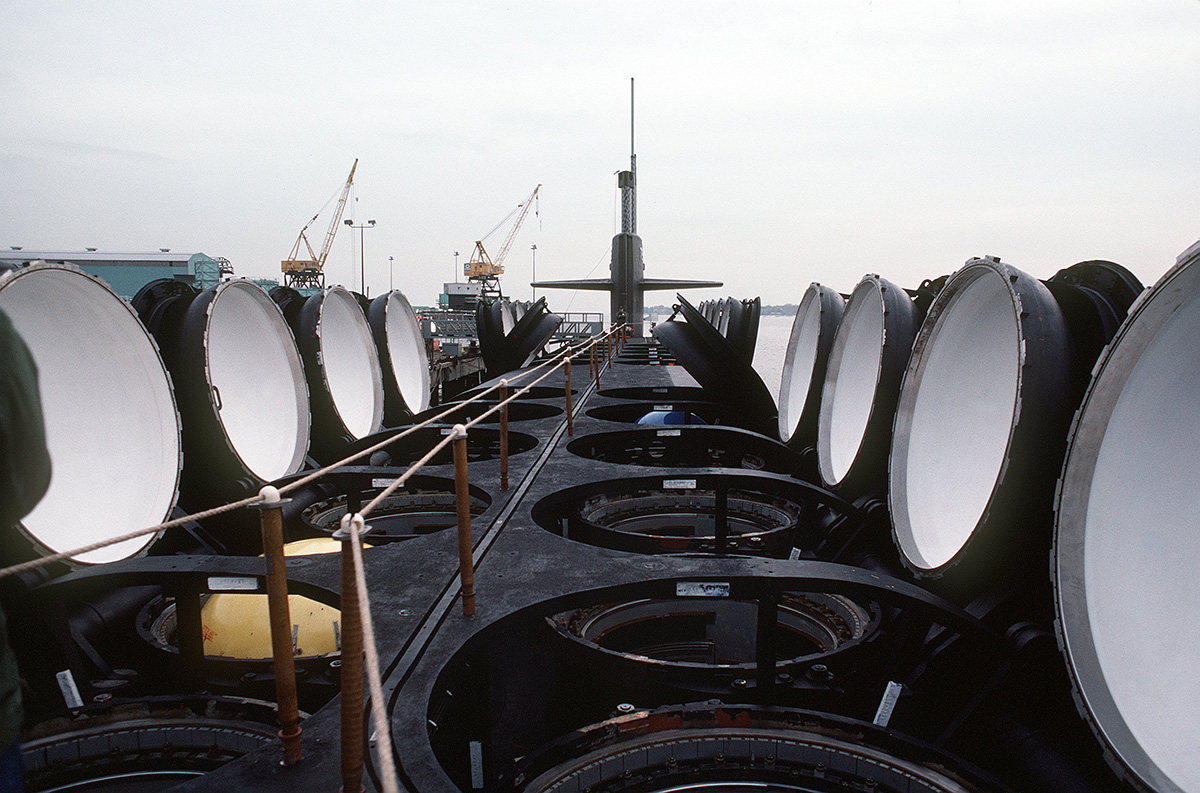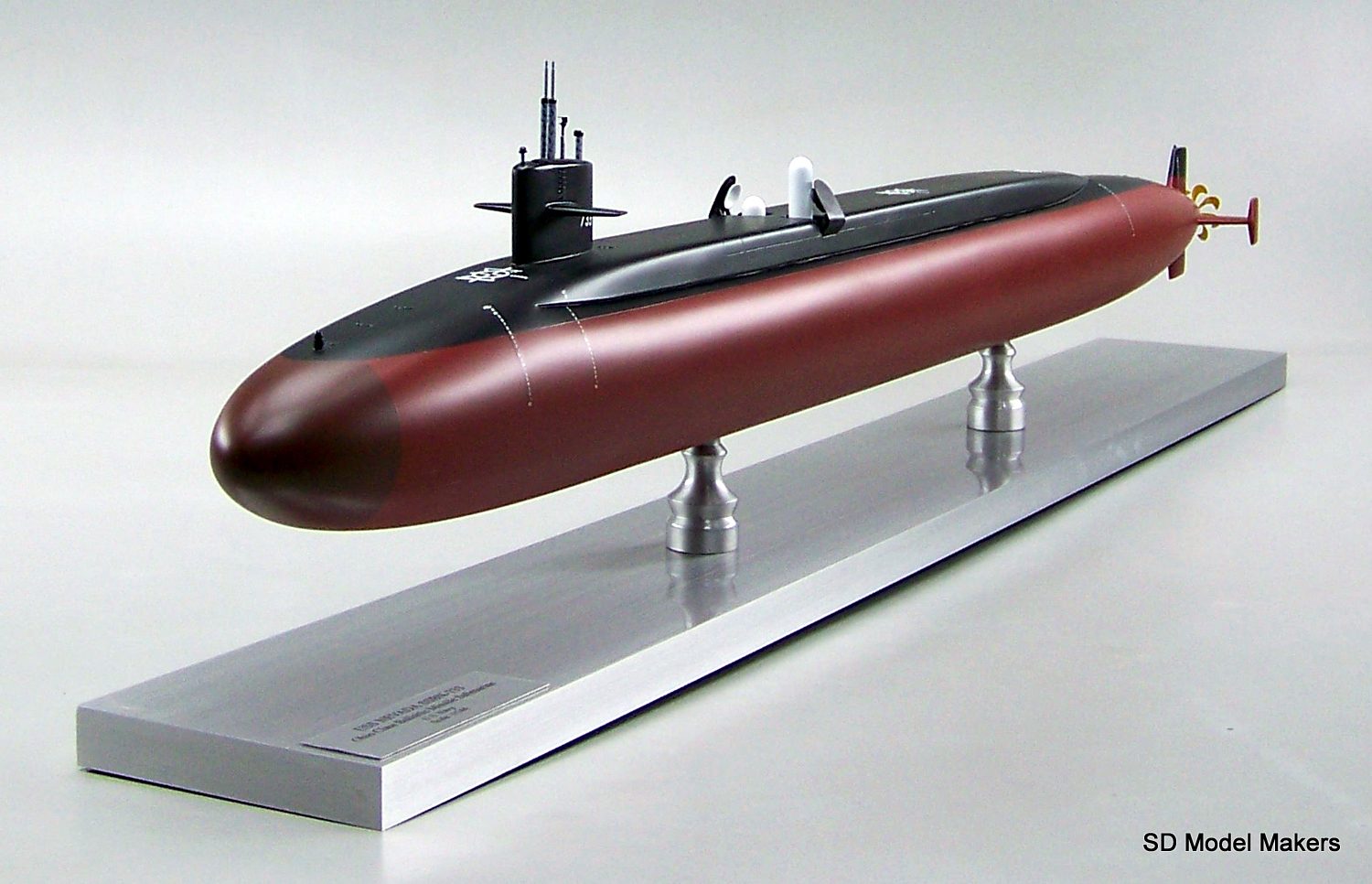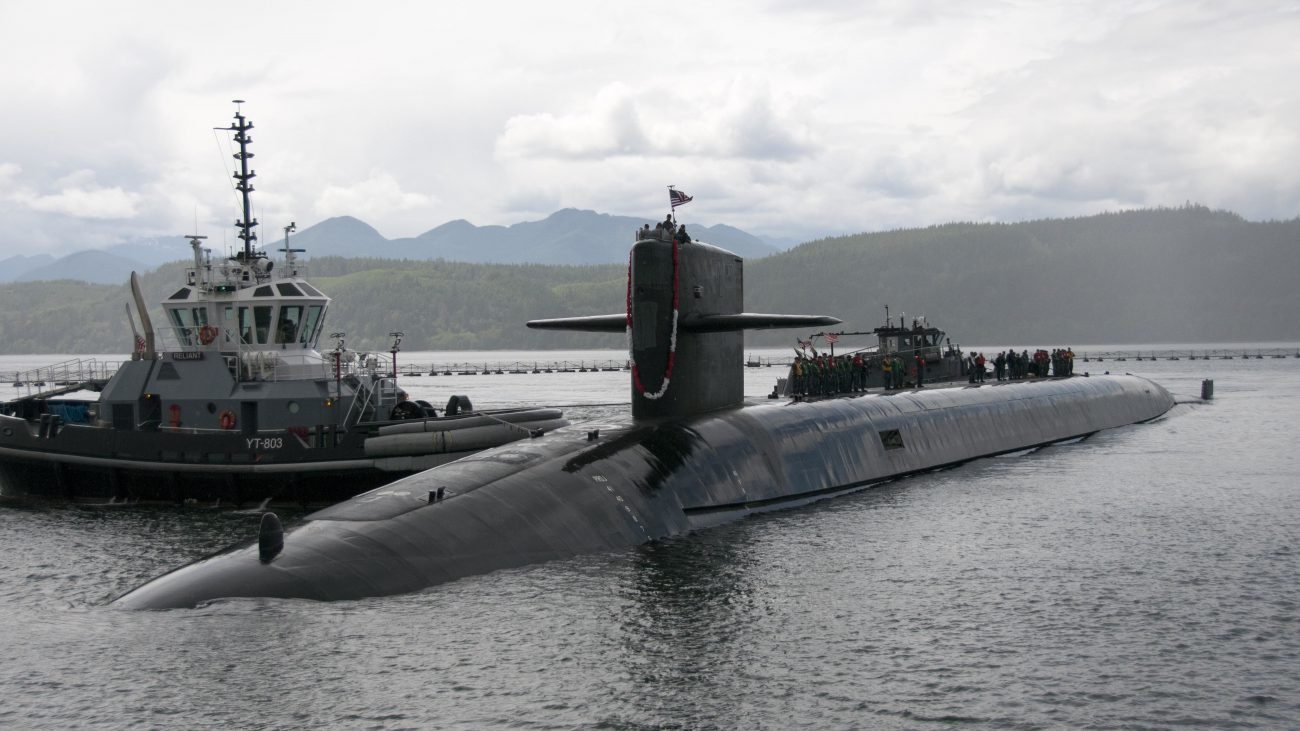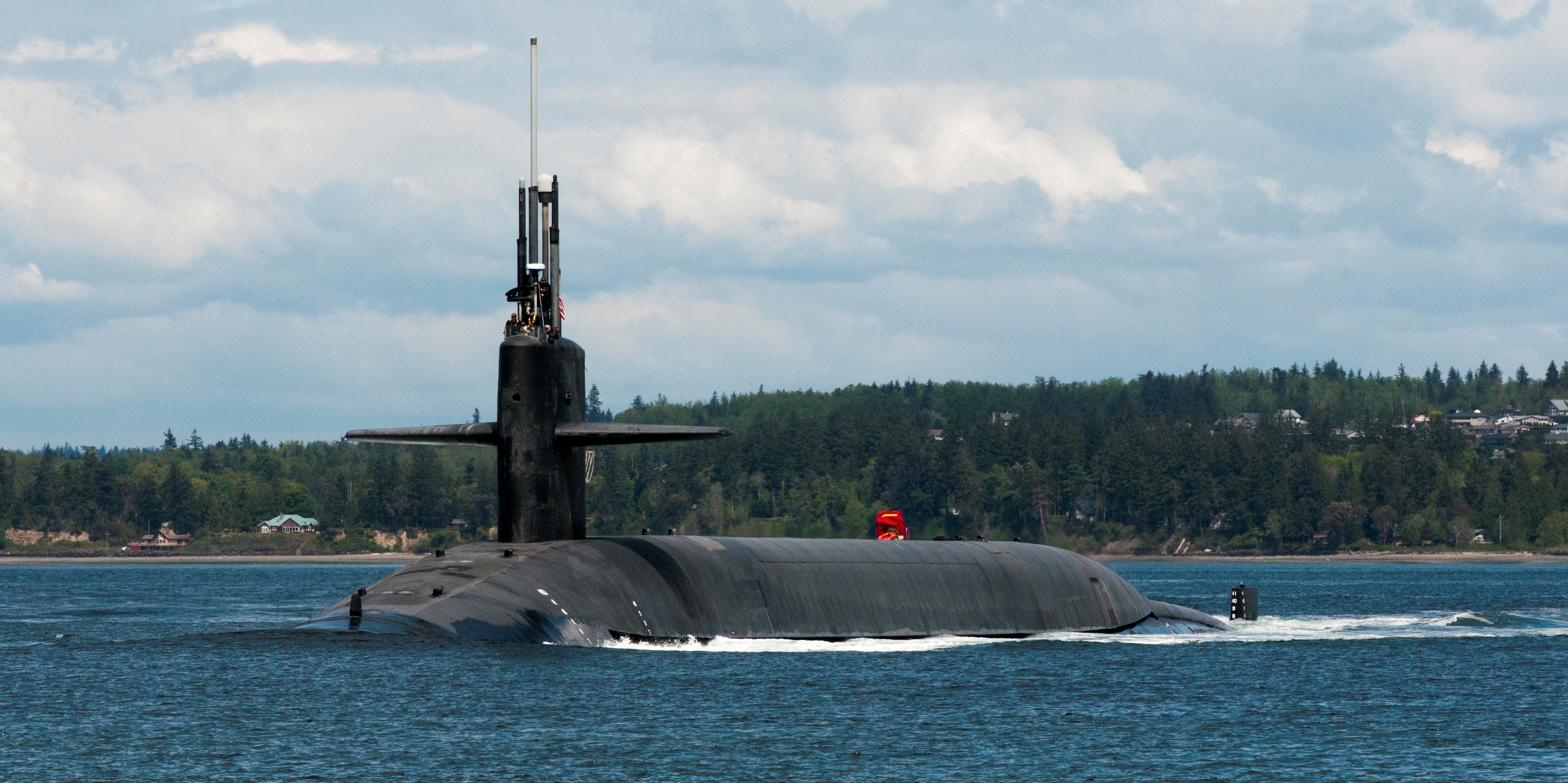Ohio Class Subs - The blue crew of the ballistic missile submarine USS Henry M. Jackson (SSBN 730) transits Hood Channel on their way home to Naval Base Kitsap-Bangor after a routine strategic deterrent patrol September 30, 2015. U.S. Navy photo by United.
The Navy's mandate to provide "uninterrupted strategic deterrence" with its ballistic missile submarines requires it to meet two goals: development of new boats must be on schedule, and old boats must reach the end of their expected service life.
Ohio Class Subs

The latter is not easy: the Navy is counting on Ohio-class ballistic missile submarines (SSBNs) to last for 42 years each, which they have never had. America's longest-serving submarine, the USS Boomer
Ohio Class Ballistic Missile Submarine Uss Alabama Returns Home
(SSGN-726) has been around for just over 34 years and has yet to earn another eight, a tenure that keeps Capt. Scott Pappano, his staff at the Naval Sea Systems Command (NAVSEA) and other Navy offices busy.
Pappano, NAVSEA's program director for strategic and attack submarines, told the USNI in a Jan. 28 interview that "we have a very good, well-designed ship that is designed for a 30-year service life." In 1995, the Navy commissioned sub-builder General Dynamics Electric Boat to analyze what it would take to bring the boats to a 42-year life, and after further commercial research, NAVSEA decided in 1998 to continue life extension.
Many of the ideas and challenges — both Hull, Mechanical and Electrical (HM&E) and Non-Propulsion Electronic Systems (NPES) — discussed 20 years ago are now coming to an end, Pappano said.
It was clear that when entering the life extension effort, the electronics would need to be upgraded. Recently, however, the Navy has realized that the analog data processing and tactical systems used by SSBNs are not only more difficult to maintain and operate, but also will not be sustainable beyond FY 2018 due to the possibility of receiving spare parts and other factors.
Stealthiest U.s. Submarine Makes Rare Appearance In Arabian Sea
Pappano said the Navy has decided to bring SSBNs into the Submarine Warfare Federated Tactical Systems (SWFTS) program, an open-architecture electronic system with regular hardware and software upgrades. Attack submarines and guided missile submarines - four SSBNs, incl
Entering Norfolk Naval Shipyard last month for her mid-life renewal review, the 27-month period will be filled with both work planned from the class's maintenance program and initiatives designed to keep the boat ready and relevant during the second half of its 42-year life. years
The upgrade to SWFTS equipment will be "logistically easier, easier to maintain" for the Navy and operators, and "also brings great capability to the vessel, essentially giving it a suite of tactical attack submarine systems," Pappano said. Central parts of the control room, computer stations, sonar and more will be torn from the submarine while it is docked for refueling and computer servers and other equipment will be installed. It also provides the Navy with an opportunity to install Consolidated Float Networks and Enterprise Services (CANES), one of the major modernization efforts the Navy is looking to program for all fleet ship classes, which will also keep SSBNs relevant and easier to maintain and update through the end of their useful lives.

, as the fourth largest SSBN, will receive SWFTS and CANES upgrades during its mid-life renewal. Older boats can receive these upgrades during the second engineering overhaul (ERP) period, which reaches 32 years of service, or the work can be scheduled at another time when public shipyards can handle work and shipmasters. A fleet does not need the sub.
Ohio Class Submarine Model
The Ohio-class ballistic missile submarine USS West Virginia (SSBN 736) departs Norfolk Naval Shipyard in Portsmouth, Virginia following a technical refueling review October 24, 2013. United States Navy photo.
(SSBN-730) will be the first to enter ERP for 32 years later this year, another reminder of the importance of planning, building and preparing the new class of ballistic missile submarines for timely deployment.
"We never operated a submarine until 42 years ago," said Pappano, and although he is confident that the booms will make it to 42, there is no room for error when it comes to preparing the leading ship in the new class. of SSBNs. deploy when
"We don't have the leeway to go beyond [42 years] right now. That's my position and I stand by it," Pappano said.
Ohio Class Submarine
On the HM&E side of the house, some of the work done today was predicted by early surgeries, such as replacing piping in steam refineries, replacing analog computers and body preservation, Pappano said. The Navy is monitoring the Ohio-class boats while reevaluating the plan to preserve them every few years "to make sure we're investing modern dollars in the right systems."
"SSGNs have effectively become canaries in the coal mine for us," Pappano said. These four boats are used inshore rather than at sea, operate at higher speeds and terrain and dive more frequently than their SSBN counterparts, creating "accelerated platform aging".
"We can learn a thing or two from SSGN operations, hopefully before SSBNs," he said, noting that SSGNs have already seen wear and tear on sanitary piping systems and the trim and drain system used to maintain neutral trim, indicating that repairs or replacements for these systems may be in the future. SSBNs.

Pappano said the Navy has a good handle on the work it knows it needs to do to keep SSBNs afloat, but as the boats near the end of their 42-year lives "some of those unknowns may be exposed."
Sub Base Kings Bay Keeping Current Ohio Subs Ready, Prepping For Incoming Columbia Class
"My biggest concern is what I don't know about the hull that hasn't arrived yet and it bit me," he said. He noted that the Navy has prioritized the Ohio Department's maintenance and modernization efforts due to its strategic importance and that he hopes the funding will remain in place throughout the budget process. Submarines
Ohio-class guided-missile submarines (SSGN) provide the Navy with unprecedented attack and special operations capabilities from a stealthy and stealthy platform. Armed with tactical missiles and possessing superior communications capabilities, SSGNs are able to directly support the strike requirements of a combatant commander and special operations forces (SOF).
The 1994 Nuclear Posture Review determined that the United States needed only 14 of its 18 SSBNs to meet the nation's strategic strength needs. Therefore, the Navy decided to convert four Ohio-class submarines into conventional SOF and land attack platforms. This allowed the Navy to leverage existing submarine technology while expanding capability to meet the current and future needs of US combatant commanders.
The SSGN Program Office refueled and converted four ballistic missile submarines (SSBN) to SSGN in just over five years at significantly less cost and in less time than building a new platform. USS Ohio (SSGN 726) entered the shipyard on November 15, 2002, completed her conversion in December 2005, and first deployed in October 2007. USS Florida (SSGN 728) began refueling and conversion in August 2003 and returned to the fleet in April 2006. USS Florida (SSGN 727) began availability at the yard in October 2004 and delivered in November 2006. USS Georgia (SSGN 729) completed a conversion in December 2007.
Virginia Class Submarine
The Navy entered into a unique partnership to bring the SSGN concept to fruition. All four submarines required an engineered refueling overhaul (ERO) as well as extensive conversion work. The Puget Sound Naval Shipyard in Washington conducted EROs for both Ohio and Michigan, while the Norfolk Naval Shipyard, located in Virginia, conducted EROs in Florida and Georgia. The Navy awarded General Dynamics Electric Boat the contract to convert an SSBN to an SSGN with the company that performed the shipyard work, the first such collaboration. A first of its kind partnership proved to be very successful as the program was completed on time and on budget.
Together, the four SSGNs account for more than half of the submarine force's vertical launch capability, with each SSGN capable of carrying up to 154 Tomahawk surface attack cruise missiles. The missiles are loaded into seven-round Multiple-All-Up-Round Canister (MAC) containers with up to 22 missile tubes. These missile tubes can also accommodate additional storage pods for SOF equipment, food and other consumables to extend the submarine's ability to remain forward deployed in support of the combatant commander's mission. Missile tubes are also capable of containing future payloads such as new types of missiles, unmanned aerial vehicles and unmanned underwater vehicles.
The SSGN has the capability to host up to 66 SOFs simultaneously. Additional bunks were installed in the missile bay to accommodate the added crew, and other measures were taken to extend the amount of time SOF forces could spend deployed aboard an SSGN. The two most advanced missile tubes have been permanently converted into locking cells that allow covert insertion and recovery
Sig p365 tulster holster, sig p365 iwb holster, sig holsters p365, sig p365 sas holster, sig p365 xl holster, sig p365 hybrid holster, appendix holster sig p365, safariland holster sig p365, sig p365 belt holster, sig p365 holster, sig p365 purse holster, sig sauer p365 holster

0 Comments